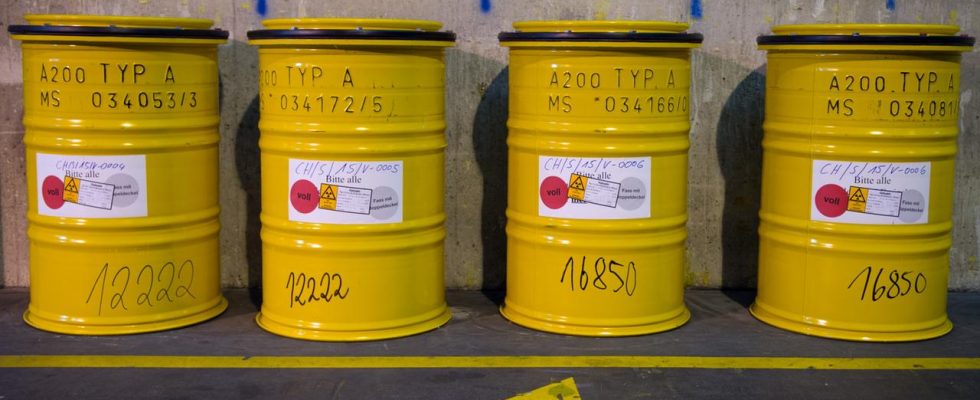After the shutdown of the German nuclear reactors, the problems of nuclear energy are far from over. The President of the Federal Office for the Safety of Nuclear Waste Management is now calling for a repository to be committed to by 2046 at the latest.
The search for a repository for the highly radioactive nuclear waste produced in Germany has been difficult for years: progress is slow. First of all, a location should be determined by 2031. But last November it became known that the targeted date could not be met. Instead, the Federal Agency for Disposal (BGE) calculates in the best case with the year 2046, another scenario even envisages a time corridor up to 2068.
Now the President of the Federal Office for the Safety of Nuclear Waste Management (BASE), Wolfram König, is calling for the year 2046 to be set “as a benchmark”. “That’s what we have to check everything in the process,” said König of the dpa news agency. Further delays must be avoided.
According to BGE managing director Steffen Kanitz, 1900 castor containers are currently stored in 16 interim storage facilities, each of them weighing around 100 tons – for which a safe location must be found. According to BASE President König, in addition to the high-level radioactive waste, there are around 600,000 cubic meters of so-called low- and intermediate-level radioactive waste, which must also be disposed of safely.
“Safety First”
“Safety is paramount, but when it comes to radioactive waste, safety is not isolated from time. If the issue is postponed too far, then time itself becomes a safety factor,” he stressed. It is therefore important to have a realistic but at the same time ambitious timetable.
König pointed out that 2046 already means a delay of 15 years to the original time plan. “I don’t think it’s justifiable that we simply accept that it will be well into this century before we even have a location, which of course still has to be built,” he emphasized. After that, 20 years have to be reckoned with for planning, construction and approval, and storage has to be operated for 30 to 40 years.
The BGE must now see where there is potential for acceleration in the process, said König. He believes that there are control options, if necessary “fundamentally readjusted”. He sees the BGE, his authority and the Federal Environment Ministry as having a duty to “sit down and analyze what worked well, what didn’t work so well and where you might have to go back to the previous standards”.
König: Not all consequences thought through to the end
According to König, the complicated search for a repository shows that Germany has taken a path with nuclear power without having thought through all the consequences to the end. “And we are there to ensure that this is not forgotten and that progress is made there.” Ultimately, the nuclear phase-out is only complete when the radioactive waste is safely locked away underground and future generations no longer have to deal with it. After the nuclear phase-out, at least no new nuclear waste will be added. “But what has remained and what remains is: how can we ensure the security for an infinite time that these highly toxic, highly dangerous substances do not get into the environment.”
Now it is a question of finding the best possible location in Germany, far away from the former combat zones, according to scientific standards. Ultimately, an endlessly drawn-out search for a repository is also a safety issue. The castor containers, in which the nuclear waste is currently stored in the interim storage facilities, do not have unlimited approval. And each of the casks contains a radioactive inventory comparable to what was released in the Chernobyl nuclear disaster.
“The current safety standards must also apply to long-term interim storage, so that people and the environment are reliably protected from the dangers of radioactive residues,” says König. It must therefore be checked in good time whether and what interactions there are on waste and containers in the case of significantly longer interim storage. At the same time, the time until disposal must be kept as short as possible.

